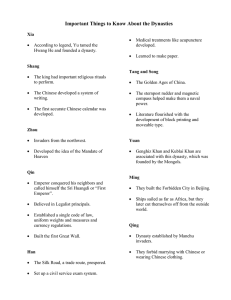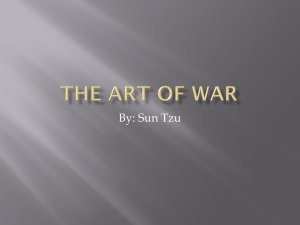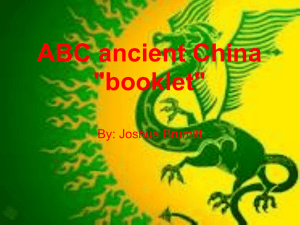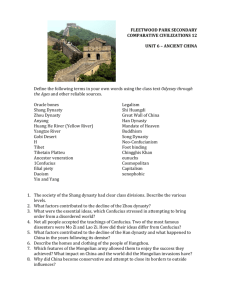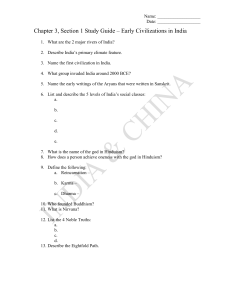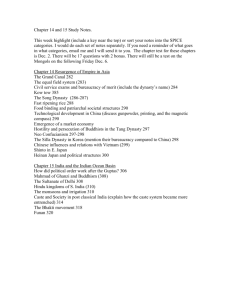CHAPTER 27 Section 1 China & Mongolia
advertisement
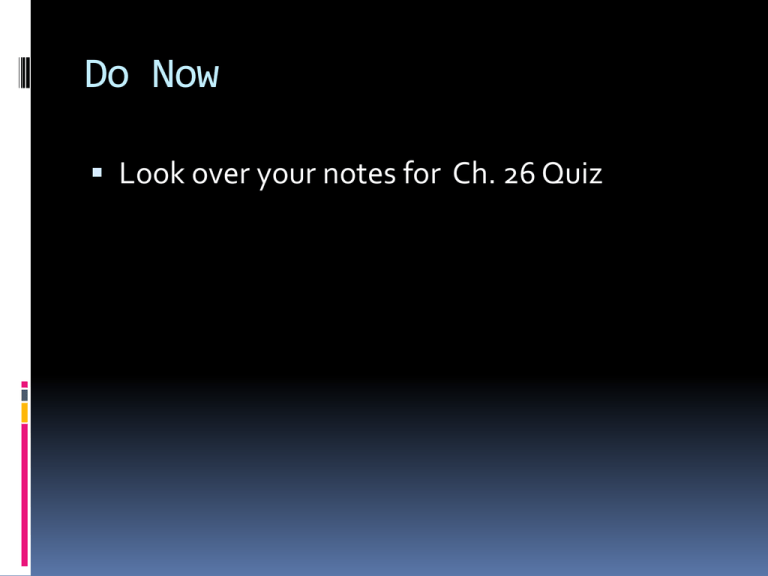
Do Now Look over your notes for Ch. 26 Quiz CHAPTER 27 SECTION 1 CHINA & MONGOLIA Aborigine Vocabulary Culture hearth Dynasty Ideogram Atheist Population Patterns 1. The Chinese About 92% of the people belong to the Han, ethnic group named for a powerful ruling family Remaining 8% belong to 55 different ethnic groups Population Patterns 2. Non-Chinese ethnic groups Tibet once a Buddhist Kingdom was taken over in the 1950s, creates tension between Chinese and Tibetans‘ 3. The Taiwanese Most Taiwan people are descended from Chinese who migrates hundreds of years ago Taiwan’s original inhabitants, ”aborigines” make up 2% of its population Population Patterns 4. The Mongolians The Mongolian empire ruled the worlds largest empire which included much of China to eastern Europe Most of China’s population live on the fertile plains and valleys along the three great rivers, This is where the large urban centers are, like Shanghai, Beijing, Tianjin, & Guangzhou Reading Check Read Urban growth on page 677 Answer this question in your notes. How has urban population growth affected rural areas in China? Dynasty’s Shang (about 1600B.C.) Power over the North China Plain, first to keep historical records Rebels by local lords and Central Asian nomad attacks weaken dynasty Eventually fell, Lost its “Mandate of Heaven” (favor of the Gods and Goddesses) Dynasty’s Zhou 800 yr. Rule about 1045 B.C. Chinese culture spread, along with trade Iron tools made at this time China’s best known Philosopher Confucius lived during this time. (Confucianism is a believe of discipline and good moral conduct to be successful in life.) Laozi founded his philosophy Daoism, (living simplicity and harmony with nature.) Dynasty’s Han United all of China Built the first section of the Great wall Traders and missionaries took Chinese culture to all east Asia Ming/ Qing dynasty’s ruled after Trade routes established with other countries China refused to allow foreigners into it trade markets 1890s European and Japanese governments force China to open its ports and take portions of its land. Modern Times Create your own graphic organizer that tells of the significance of how china was transformed in modern times. Great Wall of Culture Education & Health Care Life expectancy above 70 yrs Language & Religion Most people speak Mandarin The Arts Poetry Government pays for Most are Atheist healthcare, limited services Opera Gov’t pushing to raise literacy rate Thin porcelain “China” Language is ideograms Tour of China video http://www.youtube.com/user/onthegotours? v=Z_p4j8XlJKM&feature=pyv

